#hopi artist
Text

Hopi Katcinas drawn by native artists, illustration, 1904, Text by Jesse Walter Fewkes & Frederick Webb Hodge
#hopi kachina#hopi art#hopi artist#indigenous artist#hopi culture#indigenous art#indigenous culture#native american art#native american culture#native American artist#spiritual art#aesthetic#beauty#art history#aesthetictumblr#tumblraesthetic#tumblrpic#tumblrpictures#tumblr art#tumblrstyle#artists on tumblr
71 notes
·
View notes
Text
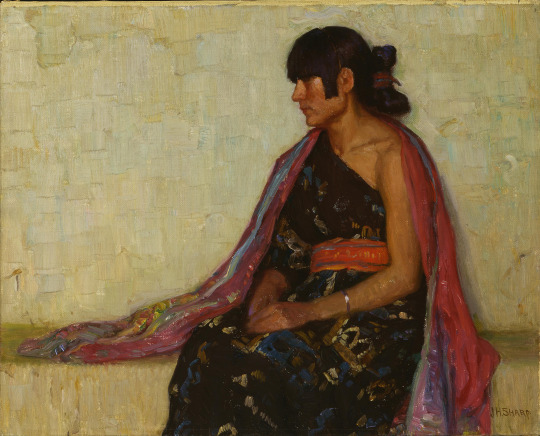
Crucita - Old Hopi Dress, Joseph Henry Sharp, ca. 1920
#art#art history#Joseph Henry Sharp#portrait#portrait painting#Native Americans in art#Hopi#Hopi tribe#New Mexico#Taos Society of Artists#American art#20th century art#oil on canvas#Buffalo Bill Center of the West
189 notes
·
View notes
Text
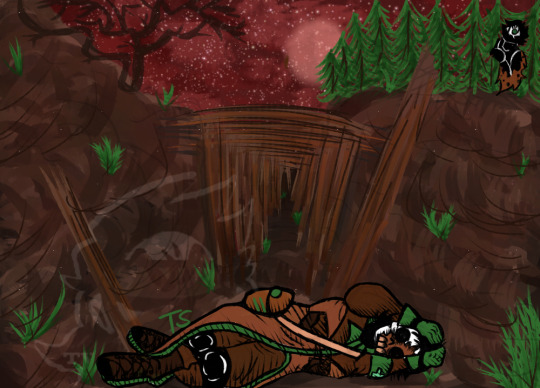
New comm ordered by oomf of the day!!!
#incredibox#sepbox#sepbox v6#sepbox embers#kiowa hopi#the watcher#kiowa hopi sepbox#the watcher sepbox#commission#fanart#art#small artist
17 notes
·
View notes
Text
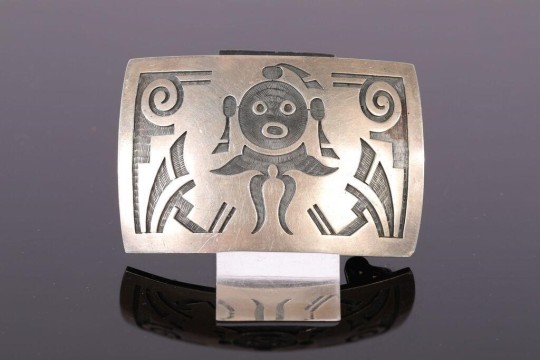
Hopi Belt Buckle by Lawrence Saufkie
Source:
Independence, MO
Carrell Auctions
2 notes
·
View notes
Text

from Silent Winds: Poetry of One Hopi by Ramson Lomatewama
#Hopi#indigenous artists#indigenous art#indigenous#ndn#indigenous poetry#I think about this every day
5 notes
·
View notes
Text
Hey y’all, if you’re a jewelry fan, the Native Seed Search website has dropped a jewelry update to help support their work: A Native American seed bank focused on the indigenous food of the American Southwest. Most of the jewelry for sale is silver and turquoise: a traditional art of the Diné (Navajo).
A selection of things for sale at the time of this post:
This sick gecko pin

These gorgeous dangle earrings
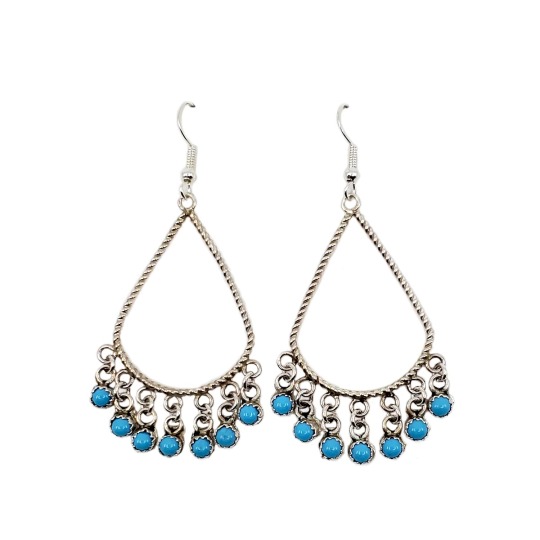
And these delicate feather earrings

Plus much more! I know none of us on this site have any money, but if you find any down the back of the couch, this is a great cause and some gorgeous wearable art.
(If you need international shipping, I would inquire with them directly, since I think their assumption is that most sales would be domestic.)
#indigenous art#native american#native american art#seed bank#conservation#biodiversity#sustainability#rocky rambles
1K notes
·
View notes
Text
Маслянные картины от Уиллоби Старший. Oil paintings by Willoughby Senior.

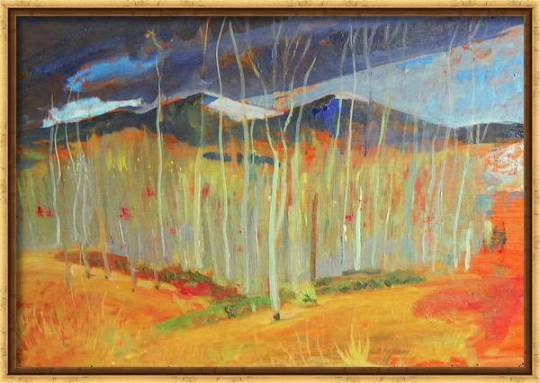
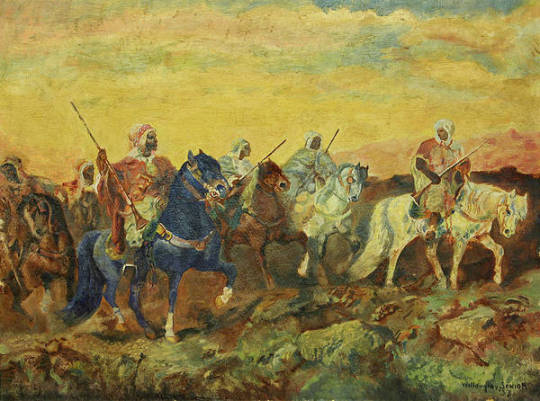



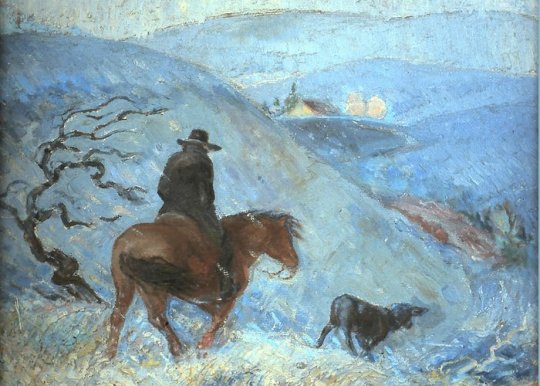





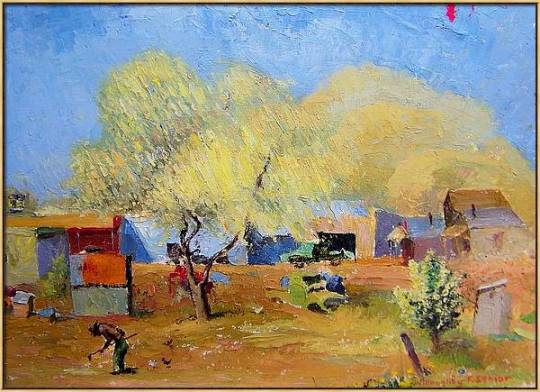




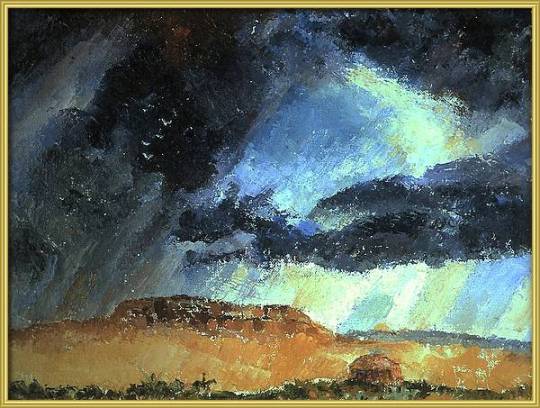
Уиллоуби-старший ( 15.10.16 - 04.02.84). Уиллоуби окончил Школу изящных искусств Национальной академии искусств в Нью-Йорке за два года, а не за традиционные четыре года. Он был автором и иллюстратором книги «Дым на ветрах», опубликованной Swallow Press, о своем более чем 25-летнем опыте среди хопи («Люди мира»). Один рецензент назвал его «наблюдателем, который действительно активно участвует». Все эти годы он также провел среди своих друзей-навахо. Уиллоби получил степень бакалавра искусств в философии. Он также имел степень доктора философии и любил называть ее «прикладной социальной этикой».
Трое детей Уиллоуби запустили сайт об искусстве в память о своем отце и матери, Эйлин-старшей (26.06.21 - 24.03.10). Его дети — Тор-старший, писатель-художник и мастер-плотник; Дон Сеньор-Траск и Ленор Старший. Его семья также издает серию книг, в которых представлены произведения искусства и сочинения Уиллоби, в том числе «Песни юности», «Песни о любви» и «Большой рогатой сове, приди ко мне на порог, умирая».
Willoughby Senior (10/15/16 - 02/04/84). Willoughby graduated from the School of Fine Arts of the National Academy of Arts in New York in two years rather than the traditional four years. He was the author and illustrator of the book "Smoke on the Winds", published by Swallow Press, about his more than 25 years of experience among the Hopi ("People of the World"). One reviewer called him "an observer who is truly involved." He also spent all these years among his Navajo friends. Willoughby received a Bachelor of Arts degree in philosophy. He also had a PhD and liked to call it “applied social ethics.”
The three Willoughby children launched an art website in memory of their father and mother, Aileen Senior. (06/26/21 - 03/24/10). His children are Thor Senior , a writer-artist and master carpenter; Don Senior-Trask and Lenore Senior . His family also publishes a series of books featuring Willoughby's art and writings, including Songs of Youth, Love Songs and Great Horned Owl, Come to My Doorstep Dying.
Источник : //willoughby-senior.pixels.com/collections/oil+paintings.
#живопись#картины#искусство#художник#Уиллоуби-старший#иллюстратор#масло и холст#Боги Навахо#портрет#пейзаж#животные арт#art#painting#artist#illustrator#Willoughby Senior#oil and canvas#Navajo Gods#landscape painting#portrait art#animals art
102 notes
·
View notes
Text
On July 4, in the year 1054, Chinese astonomers recorded what they called a “guest star” in the constellation of Taurus, the Bull. A star never before seen became brighter than any star in the sky. Halfway around the world, in the American Southwest, there was then a high culture, rich in astronomical tradition, that also witnessed this brilliant new star.* From carbon 14 dating of the remains of a charcoal fire, we know that in the middle eleventh century some Anasazi, the antecedents of the Hopi of today, were living under an overhanging ledge in what is today New Mexico. One of them seems to have drawn on the cliff overhang, protected from the weather, a picture of the new star. Its position relative to the crescent moon would have been just as was depicted. There is also a handprint, perhaps the artist’s signature.
This remarkable star, 5,000 light-years distant, is now called the Crab Supernova, because an astronomer centuries later was unaccountably reminded of a crab when looking at the explosion remnant through his telescope. The Crab Nebula is the remains of a massive star that blew itself up. The explosion was seen on Earth with the naked eye for three months. Easily visible in broad daylight, you could read by it at night. On the average, a supernova occurs in a given galaxy about once every century. During the lifetime of a typical galaxy, about ten billion years, a hundred million stars will have exploded—a great many, but still only about one star in a thousand. In the Milky Way, after the event of 1054, there was a supernova observed in 1572, and described by Tycho Brahe, and another, just after, in 1604, described by Johannes Kepler,† Unhappily, no supernova explosions have been observed in our Galaxy since the invention of the telescope, and astronomers have been chafing at the bit for some centuries.
#Cosmos#Carl Sagan#astronomy#science#cosmology#atypicalreads#nonfiction#history#space#philosophy#classics#stars#planets#galaxy#solar system#astrobiology#astrophysics#space science#quotes#1980s#universe#scientific method#1980
344 notes
·
View notes
Text
One of the notable triumphs of Soviet Cinema was Sergei Esienstein's development of the Montage. In the interest of time I'll simplify years of film history and analysis to a much shorter explanation: showing two or more images in series gives new meaning to them by forming a relationship through context. A man with a neutral expression is just a man, but by cutting to a slice of cheese we register his expression as hungry, or loving if we cut to a child, or scared if we cut to a snake. There, now you can skip film class and show this post to your professor as proof of attendance.
Cut together more abstract visuals and run them in series and you develop themes and narratives. Set them to a landmark musical score and you have Koyaanisqatsi.
Koyaanisqatsi is a movie about the imminent destruction of the planet. It's a movie celebrating the human race. It's a documentation of the anthroposcene. It's a condemnation of modernity in its very title, translated from Hopi to mean "life out of balance." It's a movie about how cool highways and nuclear reactors and military jets and brutalist architecture are. It's a great film to put on at parties.
Going through a particularly stressful point of my life right now, and at the peak of my distress I decided to spend the night in, turning out the lights and sitting on the floor, letting Philip Glass' enchanting score wash over me as I sat mesmerized by the film's celebration and condemnation of life out of balance.
This is cocomelon for film majors. I mean it, Koyaanisqatsi is the perfect film to put on in the background of a houseparty. It's like an Apple TV screensaver for the sophisticated. With Philip Glass to provide the atmosphere and rich visuals of 16mm timelapses, this is the perfect non-narrative for setting the artistic mood of a space. This is the most pretentious thing I've ever said and I wholly stand by it.
Go watch Koyaanisqatsi. It's an unmatched experience.
#koyaanisqatsi#film#cinema#filmposting#philip glass#you should watch the film on its own before putting it on at a houseparty btw#but you should play it during your next rager to give an artistic and thoughtful vibe to the frat boy kegstands
89 notes
·
View notes
Text
No. 52 - Alaska Airlines Xáat Kwáani and Salmon-Thirty-Salmon Liveries
Did you think I was done with Alaska Airlines?
No, this is actually my last post about them for now (though, mark my words, you will be seeing a post about the Gold Nugget Jet in the not-too-distant future - I just feel like we need a break from nothing but consecutive posts about the same airline, and I have other things I want to cover). But it's something that's both requested and which I've wanted to talk about for some time.
In my last post I discussed the identity of the man on the Alaska Airlines tailfin. It wasn't a major part of the story, only taking up a small piece, but I did touch on how ChatGPT apparently will lie when asked about the background of the livery. Not only does it falsely attribute the livery to Fred Kabotie, who I'm sure had more important things to do, but it also falsely claims Fred Kabotie, who was Hopi, to be Tlingit. As it turns out, though, Alaska Airlines does have a livery designed by a Tlingit artist.

image: Brandon Farris
Crystal Kaakeeyáa Rose Demientieff Worl is a Tlingit artist known for large public artwork which heavily incorporates indigenous artistic traditions and visual motifs across many mediums. Some of her previous work includes large-scale murals in Alaska and throughout the world and guardrail panels at Juneau International Airport. She feels like the most natural choice possible to design an airliner livery, given the scale and diverse canvases she works with, and in May of this year the airplane you can see looming behind her was unveiled in a brand new livery that I, and a lot of other people, immediately fell in love with.

It's safe to say that this is one of the most ambitious and unique special liveries out there. Xáat Kwáani (which means 'salmon people' in Tlingit) is a beautiful and one-of-a-kind take on the often-noticed resemblance airplanes have to fish.
Salmon fishing is huge in Alaska, both now and historically. Today fishing is a major part of the Alaskan economy and something many people making a living off, but historically they were even more directly responsible for making the difference between life and death for those who lived beside them. A major source of food, they were literally life-bringing to indigenous societies, necessary to survival. Humans and salmon were part of the same ecosystem.
Independent of this fact, airplanes seem to lend themselves to comparisons to sea creatures. They may be called 'birds', but time and time again other people confirm that I'm not just imagining it, they do distinctly look like cetaceans and fish. Very early on in this blog the fact that 747s look like Humphead Wrasse was discussed. Amakusa Airlines, Japan Transocean Air, and Southwest Airlines have all leaned into this fish resemblance, and I'm sure over time my sea creature plane tag will continue to grow. This genre of livery will never cease to delight me.

I think it's fairly predictable that I always loved N559AS, the brilliantly named salmon-thirty-salmon plane. I was devastated when I learned that the livery was going to be removed. I mean...just look at her.

The salmon-thirty-salmon was a very unconventional take on the fish-plane, using a much more realistic drawing than any other attempt. It doesn't even try to transform the plane itself into the fish, which I think is potentially a smart way of accepting the limits of doing so. Instead, it fully displays the honestly hilarious and adorable face that salmon have while providing a nice canvas, a bit of water for the salmon to be carried on. At the same time it incorporates thoughtful details like the scales on the interior winglets, and the way the salmon's body is aligned with the empennage and nose feels very precisely done. It can create a somewhat uncanny doubling effect from a few angles, but by no means is it enough to rob the livery of its charm or elegance.
The salmon-thirty-salmon gets an A.

I've lived near the ocean my whole life. I love fish. I loved this plane. I was heartbroken when I learned the livery was going to serve its final milk run before rolling into the hangar for the very last time, coming out repainted and lost forever. It's always a bitter pill to swallow when airlines retire special liveries, particularly when it involves the plane being repainted into the standard colors. A lot of other people were sad to see this design go too.
What we didn't know was that this was not the end of the salmon-thirty-salmon. She was not lost, but transformed. When she emerged from the hangar again she was not wearing Alaska Airlines' default colors but something even more eye-catching, a livery honoring the same fish but with extra layers of meaning added by means of an intricate and beautiful new design.

Costs, materials, and man-hours used to paint an airplane vary dramatically from case to case, livery to livery, model to model, airline to airline. The numbers in my description are somewhat conservative estimates used for comedic value. Alaska Airlines actually gave some numbers for Xáat Kwáani - twelve days, 117 gallons of paint. The colors used are Midnight Blue and Atlas Blue for the background, White for the fish themselves, and Pink for highlights, and a clear coat has been applied over the top in order to preserve the livery. Alaska Airlines has every intention of keeping it intact for as long as possible.

The use of colors is beautiful. The waves of darker and lighter blue keep it from ever looking too light or too dark, adjusting to the lighting in order to always remain saturated and vivid, and the irregular wave pattern keeps any part of the livery from looking static. The use of the pink as a highlight is sparing but effective. The white, though, is what makes this livery so fantastic. A central tenet of this blog is a disdain for the dominant trend of livery design in recent history, Eurowhite - that of an almost entirely white fuselage. And there is a legitimate sense of general derision for white, but it can be so powerful as a design feature. There is no contrast more powerful than a stark and complete absence, a space carved out fully from the world and color around it. It is the color of bone and snow.

The balance of each color is just perfect, the blue never overpowering the white, the white never fully blocking out the blue, the pink subtly adding depth throughout, and the shapes of the salmon are placed perfectly, not feeling cramped or confined. They are free to wander the fuselage and they have an amazing sense of movement to them, as if caught mid-leap. I've seen salmon swimming upstream to spawn, and they are so startlingly large and vivacious. The fish on this plane, though stylized, perfectly capture the way that these fish look in motion.
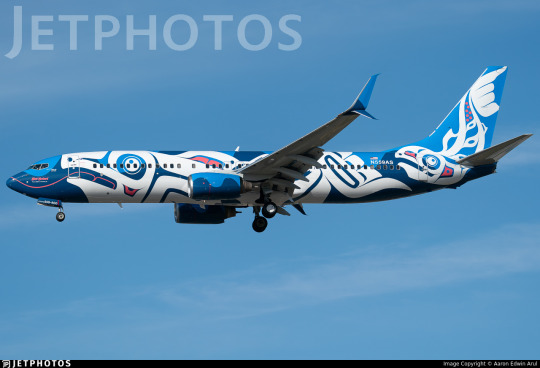
Formline is a style of art historically created by indigenous peoples of the Pacific Northwest coast of North America. It was a common and versatile visual element, present in everything from painting to carving to weaving. It is defined by its use of continuous, curving lines which may change in angle, width, and direction but do not terminate. Though it was diminished in quantity by suppression of indigenous culture by US and Canadian settlers it never went away, and from the second half of the 20th century onwards it has been surging back as more and more indigenous artists are able to produce and display their work. Worl has worked with formline many times before. She is quoted as saying:
Every time I looked at an Alaska plane, I couldn’t help but visualize the salmon being in formline [...] I can’t help but look at things and see how to Indigenize them.

And the idea has now come to life in this absolutely unforgettable livery. I wish I was within the range of the 737-800 from Alaska Airlines' hubs so that Xáat Kwáani could pay a visit to my home airport, because this is among the most beautiful planes in the world right now. And beyond just nice colors and pleasing shapes it represents something important - indigenous artists being given a 40-meter-long flying platform on which to honor fish which have provided countless centuries of life to the people who live beside them.

Worl's work is above and beyond what I would have ever expected for a custom airplane livery. Even the 'Alaska' wordmark is neatly incorporated into the formline, blending into the background to the point it's hard to notice in a good way.
Most liveries are designed by graphic designers and branding firms. Landor Associates design liveries and logo, but they aren't building monuments or putting their work in galleries. I don't mean to diminish their work - obviously I'm passionate about it, I have a blog about it - but it's just fundamentally different from what Worl does. It has different priorities, a different philosophy, and a different level of personal investment.
From my perspective Xáat Kwáani feels less like branding material and more like a piece of artwork. This isn't something designed to go on letterhead, to be put in a press kit, to be widely reproduced. It's something to be looked at, thought about, and remembered. This is a mural that flies.
I mean...A+, obviously.
There is just about nothing else in the sky which has the same visual power as Xáat Kwáani. As far as I'm concerned, every gallon of paint was worth it to give us this flying tribute to the people and wildlife of the state Alaska Airlines takes its name from.
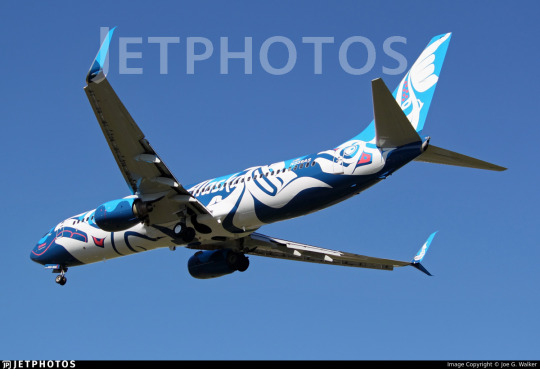
127 notes
·
View notes
Text
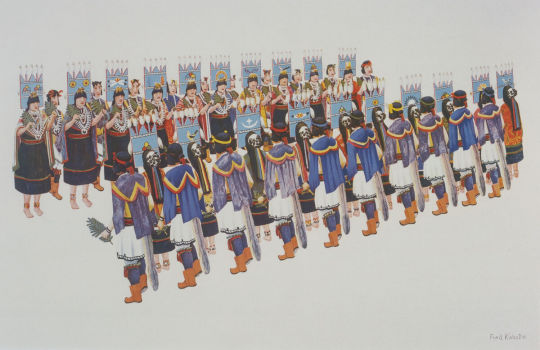
November is Native American Heritage Month. We recognize and honor indigenous cultures and worldviews that focus on living in harmony with nature as a part of a shared ecosystem. In this post, we bring you a watercolor painting entitled "Butterfly Dance" by Fred Kabotie (c. 1900–1986) who was a celebrated Hopi painter, silversmith, illustrator, potter, author, curator and educator.
The Hopi Butterfly Dance takes place in late summer to early fall in northern Arizona’s Hopi villages. It is a two-day ceremony for the harvest, calling for rain, good health, and long life for all living things. The dance is performed by young and unmarried girls, a ritual to learn what it means to be a young Hopi woman and her purpose within Hopi culture. On the day of the ceremony, the dancer wears a kopatsoki (headdress) and ceremonial clothing with her feet painted yellow, symbolizing the eagle’s yellow feet, so that she can dance lightly throughout the day. (You can learn more about Butterfly Dance in the essay written by Gloria Lomahaftewa on the National Museum of the American Indian’s website.)
Butterfly dance
Kabotie, Fred, Native American painter, 1900-1986 [artist]
Watercolor on paper
14 x 21 3/4"
Native American, Hopi
ca.1928
Repository: School for Advanced Research, Santa Fe, Santa Fe, New Mexico, United States
HOLLIS number: 8001696092
This image is part of FAL’s Digital Images and Slides Collection (DISC), a collection of images digitized from secondary sources for use in teaching and learning. FAL does not own the original artworks represented in this collection, but you can find more information at HOLLIS Images.
#NativeAmericanHeritageMonth#Hopi#ButterflyDance#HopiCulture#NativeAmericanArt#FredKabotie#HarvardFineArtsLibrary#FineArtsLibrary#Harvard#HarvardLibrary#DigitalImages
67 notes
·
View notes
Text

Hopi Katcinas drawn by native artists, illustration, 1904, Text by Jesse Walter Fewkes & Frederick Webb Hodge
#hopi art#hopi artist#hopi culture#spiritual art#indigenous artist#indigenous art#native american culture#native american art#native American artist#illustration#book illustration#aesthetic#beauty#art history#aesthetictumblr#tumblraesthetic#tumblrpic#tumblrpictures#tumblr art#tumblrstyle#kachina#hopi kachina#artists on tumblr
60 notes
·
View notes
Text

The Creator said: "I want to hide something from the humans until they are ready for it. It is the realization that they create their own reality."
The eagle said, "Give it to me. I will take it to the moon." The Creator said, "No. One day they will go there and find it."
The salmon said, "I will bury it on the bottom of the ocean."
The Creator said, "No. They will go there, too."
The buffalo said, "I will bury it on the Great Plains."
The Creator said, "They will cut into the skin of the earth and find it even there."
Grandmother, who lives in the breast of Mother Earth, and who has no physical eyes but sees with spiritual eyes, said, "Put it inside of them."
And the Creator said, "It is done."
— Creation story from the Hopi Nation, Arizona - artist: Vasil Woodland
119 notes
·
View notes
Text
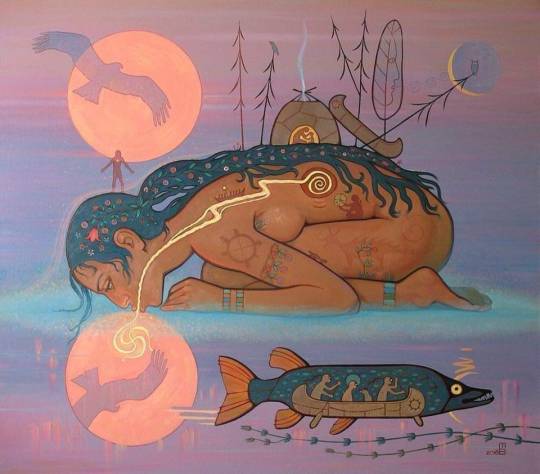
Creation said:
“I want to hide something from the humans until they are ready for it.
It is the realization that they create their own reality.”
The Eagle said,
“Give it to me. I will take it to the moon.”
The Creator said, “No. One day they will go there and find it.”
The Salmon said,
“I will bury it on the bottom of the ocean.”
The Creator said, “No. They will go there, too.”
The Buffalo said, “I will bury it on the Great Plains.”
The Creator said, “They will cut into the skin of the earth and find it even there.”
Grandmother who lives in the breast of Mother Earth,
and who has no physical eyes but sees with spiritual eyes, said,
“Put it inside of them.”
And the Creator said, “It is done.”
- Creation story from the Hopi Nation, Arizona
- artist: Vasil Woodland
67 notes
·
View notes
Note
do you have any recs for more folk-influenced women's noise projects? i really like svitlana nianio and aine o'dwyer and i'm wondering if there's more similar stuff out there
Hello there, it's a very interesting question! There's plenty of artists who mix folk with experimental/noise/contemporary. Here's a list of few I can think of right now:
There's Księżyc [x], a 90s experimental classic from Poland - it's a whole band, but fronted by two women.
Adela Mede [x] is a Czech artist creating contemporary sound collages with some folk vocals
Maryana Klochko [x] - an Ukrainian artist, her style ranges from more electroacoustic to more trip-hopy/electronic, worth checking out few of her tracks to get a range (I like the song Kvity, which kind of changes from one to another)
Tomoko Sauvage [x] - Japanese artist hugely inspired by various music folklore traditions, such as Carnatic water-bowls instrument
Julia Ulehla / dalava [x] - Czech vocalist, composer, ethnomusicologist "With her husband guitarist Aram Bajakian, she initiated a new line of performance research based on the ancestral song tradition of her father’s lineage, sourcing folk songs collected and transcribed by her great-grandfather, biologist Vladimír Úlehla".
Daina Dieva [x] - from Lithuania. Her works aren't maybe the most folklorish, but their closeness to the world of nature makes me put her in the mix
Audrey Chen [x] - Chinese-American artist mixing cello, voice and analogue synthesizers to create hauting compositions
Sainkho Namtchylak [x] - is a Tuvan experimental singer, known for using Tuvian throat singing and overtone singing named Khöömei. She mixes elements of east asian culture with genres such as avant jazz or electronica.
For more Slavic avant-folk check out this this compilation by In Crudo: [x] it's not all-women but features some inspiring women artists (Svitlana Nino and Księżyc included)
One can mix folk traditions with pretty much any genres I tried to stick to your artists of reference, but it's hard to find something *just like that* and nothing else - there are many more artists than these I've mentioned!
60 notes
·
View notes
Text
The Bracket!
Thank you to everyone who was interested and everyone who voted! You chose Tusayan (Sosi/Dogoszhi) and Mesa Verde to represent our black-on-whites, and Plain Smudged and Corrugated to represent our utility ware types! (I was not expecting such a plain smudged sweep - I love to see the enthusiasm!)
So, without any more ado, here is the Finalized Pottery Bracket!
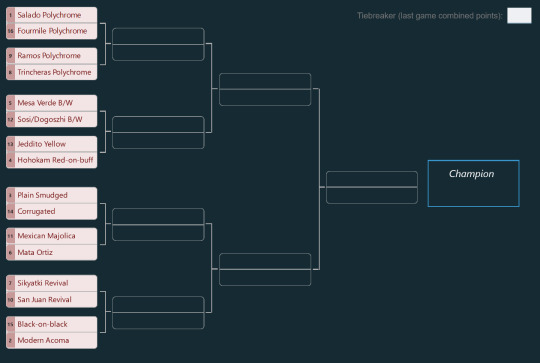
There are SO many more pottery types than these 16, and every time I go to a museum or search up on my favorite Southwest pottery reference websites (New Mexico Office of Archaeology's Pottery Typology Project and Northern Arizona University's American Southwest Virtual Museum) I am reminded of just HOW many different pottery styles there are and how I want to show all of them off...
But these sixteen cover a wide range of styles, locations, and time periods, and give a good sweep of pottery history of the Southwest!
Instead of being separated into seeds, they're grouped by theme. More details on each matchup below:
Tournament 1: Northern Polychromes. Salado Polychrome (that is, Roosevelt Red Ware, Pinto/Gila/Tonto polychrome) vs. Fourmile Polychrome (and the closely associate St. Johns Polychrome). Red, white, and black pottery made in Arizona and New Mexico.
Tournament 2: Southern Polychromes. Ramos Polychrome vs. Trincheras Polychrome. Red, black, purple, and cream pottery made in Chihuahua and Sonora.
Tournament 3: Triumphant Black-on-whites. The return of Mesa Verde Black-on-white and Sosi & Dogoszhi Black-on-white, going head to head!
Tournament 4: Yellow-ish wares. Ancestral Hopi Jeddito Yellow Ware (including the dramatic Sityatki Polychrome) from the Hopi Mesas of Arizona vs. Hohokam red-on-buff types (including Sacaton Red-on-buff and Santa Cruz Red-on-buff) from southern Arizona.
Tournament 5: Return of the Utility Wares. New corrugated and new plain smudged types, still mostly from the Mogollon region both, going to single elimination!
Tournament 6: Mexican Originals. Mexican Majolica, in its distinctively popular type Talavera, the brilliantly colored pottery from the Spanish colonial period in the 1600s, is primarily associated with Puebla, Mexico, which is rather far south of our US Southwest/Mexican Northest topic area, but has for centuries been a popular throughout Spanish-influenced Mexico and the US Southwest. Mata Ortiz, meanwhile, is a modern art pottery style developed in the 1960s in Chihuahua, taking inspiration from the archaeological pottery of Paquimé (including Ramos Polychrome).
Tournament 7: Pueblo Revivals. Sikyatki Revival is the name given to the style of Hopi pottery developed by the Hopi-Tewa potter Nampeyo in the late 1800s based on archaeological pottery from excavations at Sikyatki Village; vs. San Juan Revival, a pottery movement by potters of Ohkay Owingeh Pueblo (formerly known as San Juan Pueblo) starting in the 1930s.
Tournament 8: Modern Pueblo Art. Some of my personal favorite pottery styles picked out from many, many artists working in the Southwest today, Black-on-black (matte black on polished black, or vice versa) pottery developed in the 1910s by a San Ildefonso potter, and still popular primarily in Santa Clara and San Ildefonso Pueblos, vs. Modern Acoma Pottery, a distinctive style in bold reds, whites, and blacks that is just. Gorgeous. You'll see. (I don't mean to diss modern Hopi and Zuni and Navajo and everyone else's styles by not including them, because they're also beautiful and striking, but I had to stop somewhere!)
11 notes
·
View notes